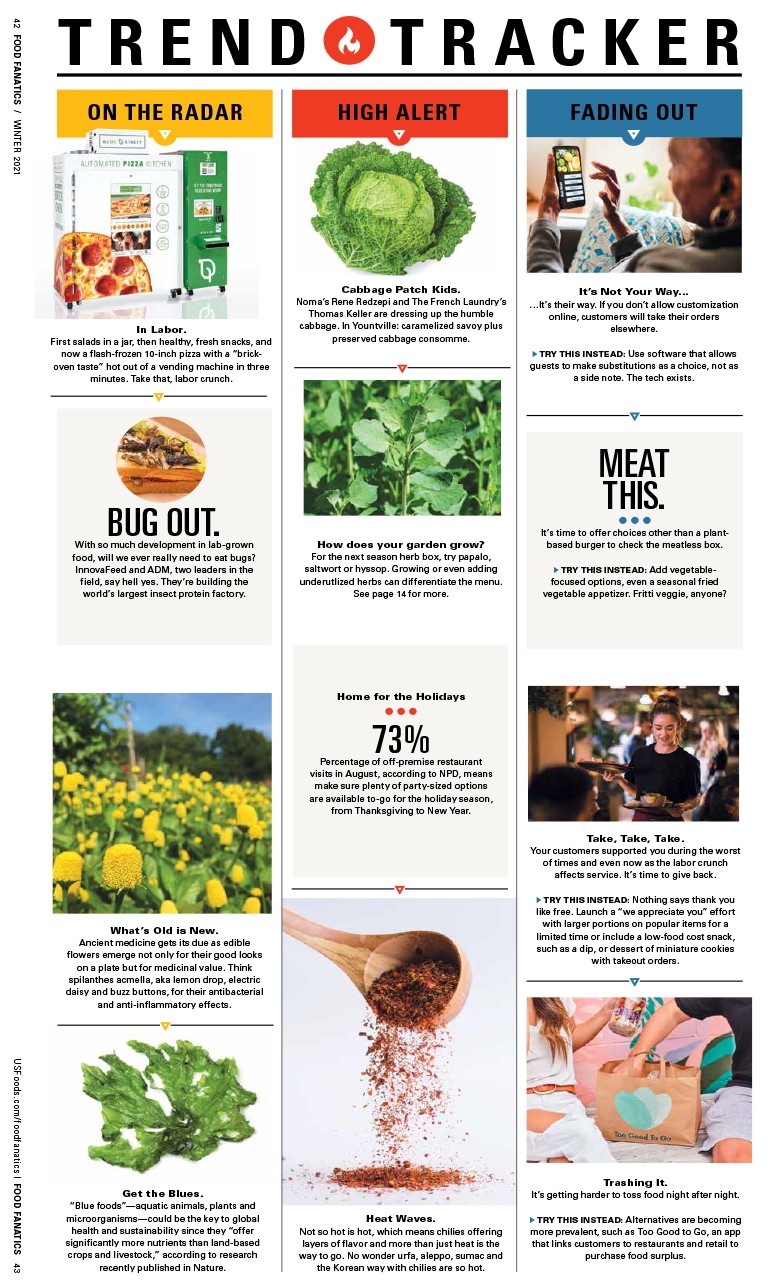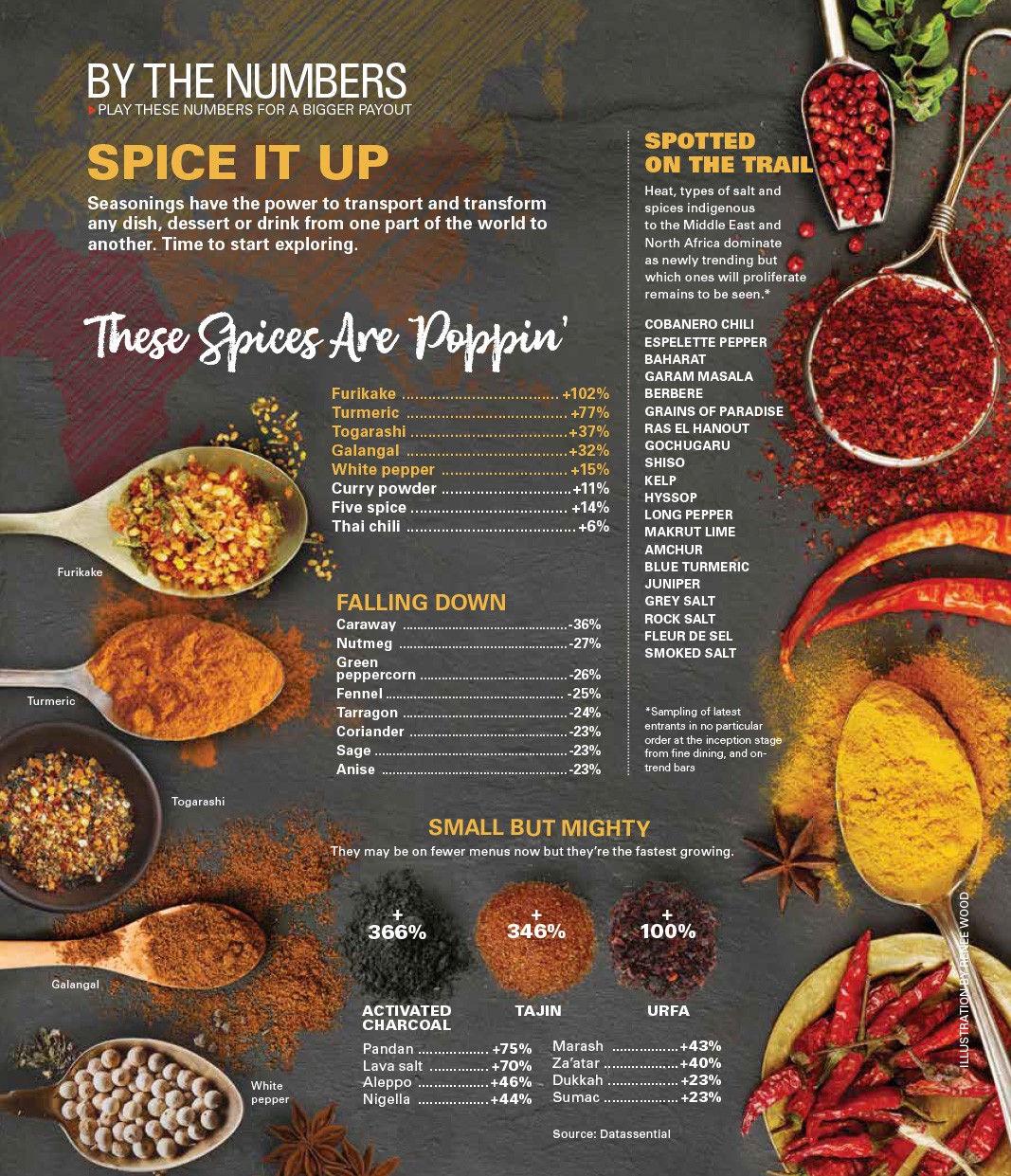HOW TO WELCOME GLUTEN-FREE CUSTOMERS (AND WHY YOU SHOULD)
Consider the attention on gluten. For restaurateurs eager to please, jumping on the gluten-free train would be understandable—even expected. The dietary demand for gluten-free food is the latest dining phenomenon, reminiscent of the low-carb, high-protein craze that nearly drove pasta, pizza and potatoes into menu extinction.
But many of these diners differ from those casting out carbs to drop a few pounds, so pay close attention.
WHY PEOPLE GO GLUTEN-FREE
First, there are those with celiac disease, an inherited autoimmune disorder that’s treated with a gluten-free diet. For one in 133 people—about 3 million in the United States—consuming gluten can be life-threatening.
Another six percent—18 million—suffer from a gluten intolerance, a gamut of conditions that cause adverse responses to gluten, such as bloating and abdominal pain.
However, intolerance isn’t the only factor—an estimated 90 percent of gluten avoiders shun it for personal reasons, such as weight control or health, even though no conclusive evidence shows that going gluten-free is any better for you.
“Three out of five consumers described gluten-free food as slightly or much more healthy,” says Mary Chapman, director of product innovation for food industry research firm Technomic. “Gluten-free options have become fairly popular. In the past two years, gluten-free options at full-service restaurants have increased from around 100 items to more than 1,000.”
Because the demand for gluten-free items is being driven by three distinct audiences, operators should be transparent when diving in. It’s a lesson that can be learned from the firestorm that came after Domino's trumpeted the first-ever gluten-free pizza crust last year. While the crust was gluten-free, its prep conditions and utensils were not, leaving the possibility of cross-contamination.
HOW MUCH GLUTEN IS HARMFUL?For those with celiac disease, even a speck of gluten can damage their intestinal tract. With no official labeling standard in the U.S., anyone can claim that a product is gluten-free. Certification efforts, however, are in the works to exceed what the FDA deems harmful. |
WHAT FOODS CONTAIN GLUTEN?What's the deal with gluten? It's the protein in wheat, rye and barley. But gluten is also in many other foods often found in the walk-in. Some of the most common culprits include:
*do not contain gluten, but are at high risk for cross-contamination during processing Gluten isn't obvious when it comes to prepared foods. Here are some items to keep on the watch list:
|
7 WAYS TO ACCOMMODATE GLUTEN-FREE CUSTOMERS
What’s the simplest but most responsible approach to meeting customer demand for gluten-free items? Start with ingredients without gluten, of course. But also prepare the food in a designated area with its own utensils and equipment.
Take the natural route.
Basic unprocessed proteins like fresh fish, chicken and beef, and grains such as quinoa and brown rice are gluten-free. The same goes for fruits and vegetables. Julie Carrigan, culinary director at Henry Ford Macomb Hospital in Clinton Township, Mich., doesn’t offer a special gluten-free menu but calls out the naturally gluten-free items.
Develop gluten-free mainstays.
More chains have new gluten-free items, such as Elevation Burger, Gatti’s Pizza, P.F. Chang’s and Pinkberry. At Subway, baking specialist Mark Christiano has been working with celiac groups in test markets to develop gluten-free sandwich breads, as well as a gluten-free brownie.
Morph menu items into gluten-free options.
Marshall Blair, chef-owner of Blair’s Restaurant in Los Angeles, swaps out ingredients with gluten. “I can do just about anything on the menu as gluten-free,” he says. “I might have to adjust the recipe to remove something like breadcrumbs, but I try to do everything I can to give them what they want.”
Create a “gluten-free zone.”
Two dining rooms at Cornell University in Ithaca, N.Y., offer gluten-free food stations that feature gluten-free breads, bagels, toppings, cereals, pasta, pizza and desserts.
Design a gluten-free menu.
From colleges to high-end restaurants, many operations offer a daily menu highlighting gluten-free options.
Mark up your menu.
Identify gluten-free options by grouping them or using icons. Crave restaurants, with seven national locations, developed a red GF icon that indicates specific menu items, such as chicken wings, steaks and salads that are gluten-free.
Learn more about celiac disease.
Give yourself a primer on celiac disease with the help of the Celiac Disease Foundation. Delve deeper with the Gluten Intolerance Group or the National Foundation for Celiac Awareness, which offers training and accreditation specifically for foodservice.



